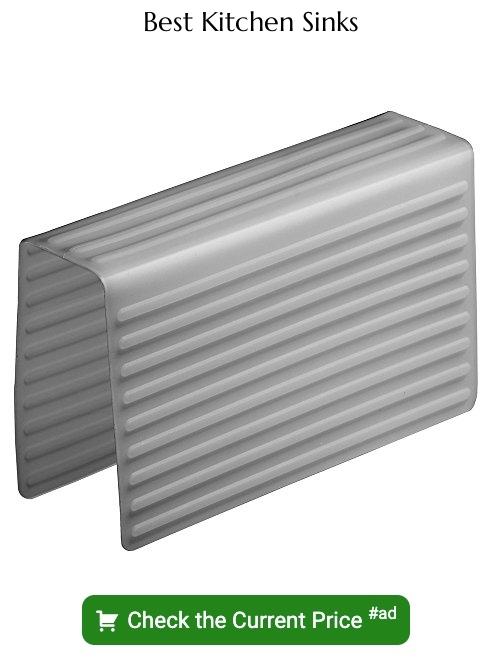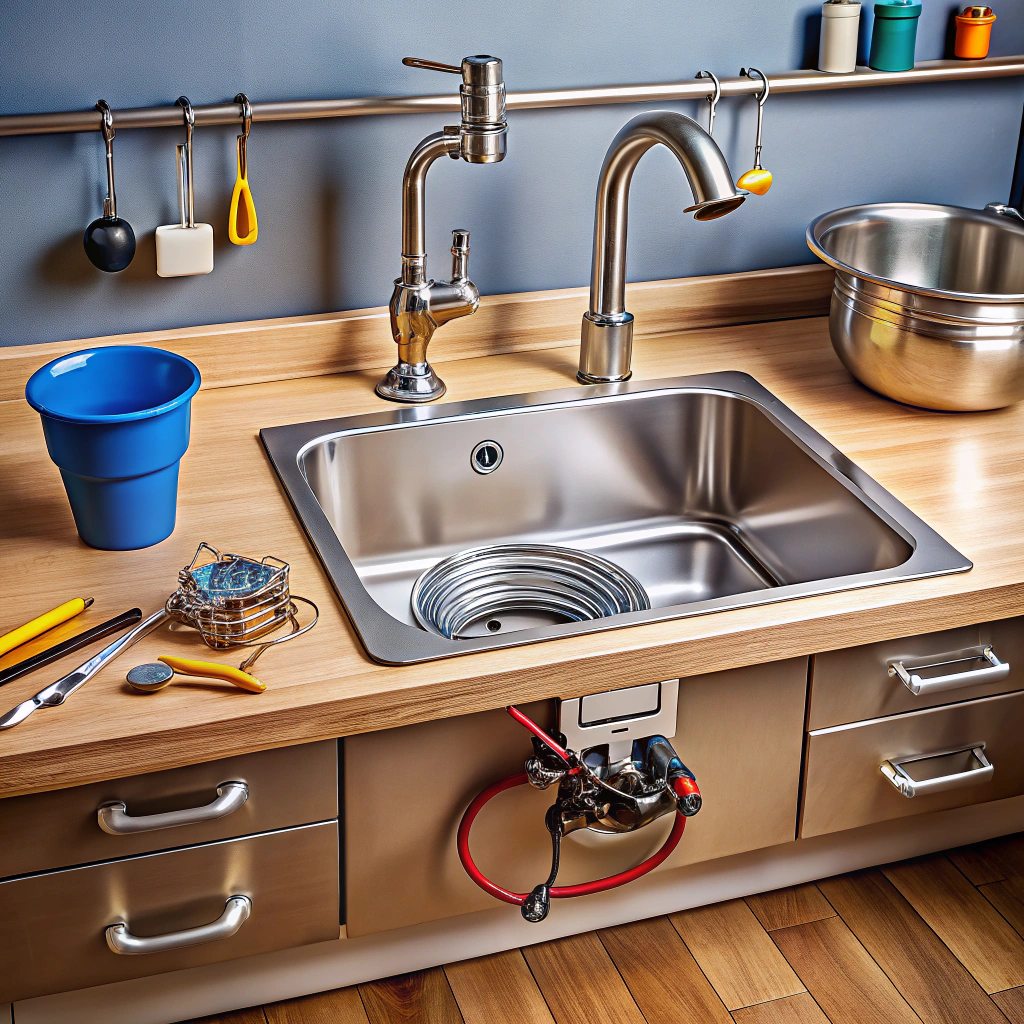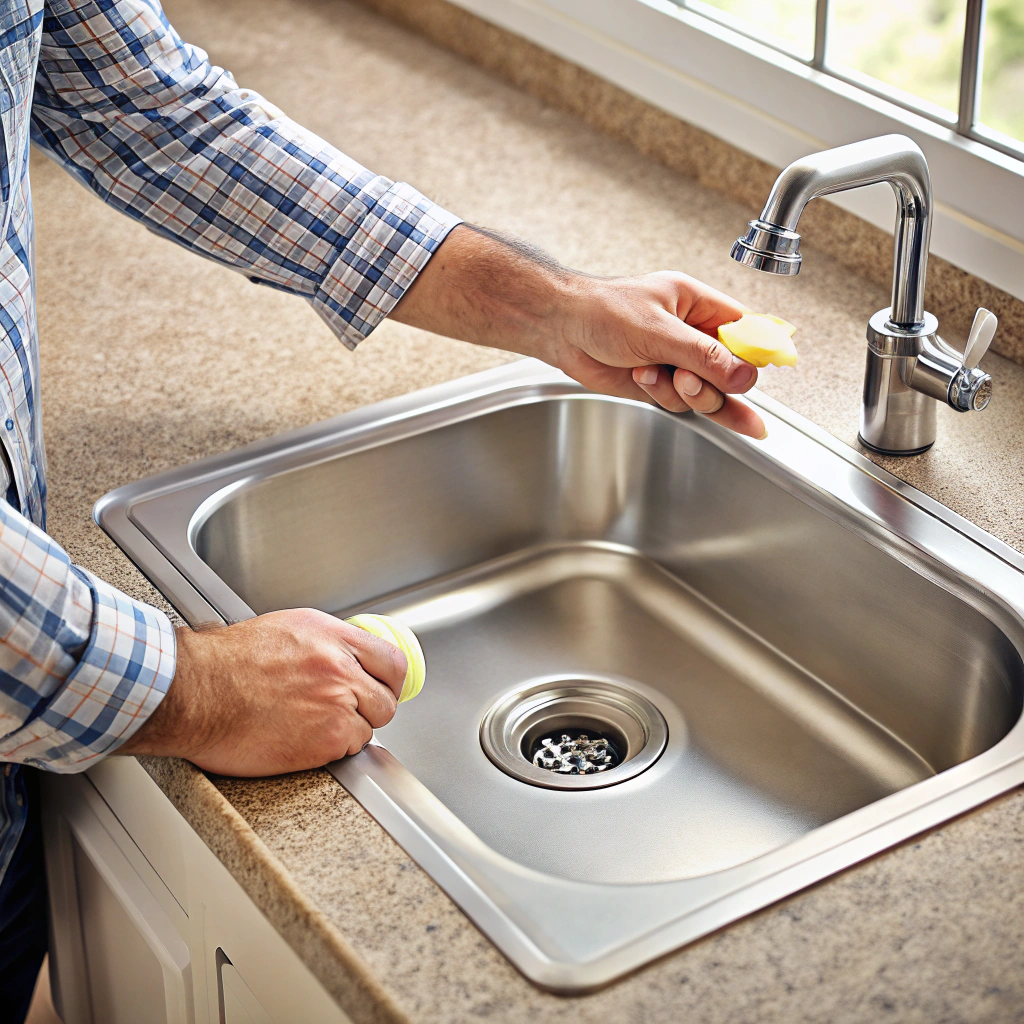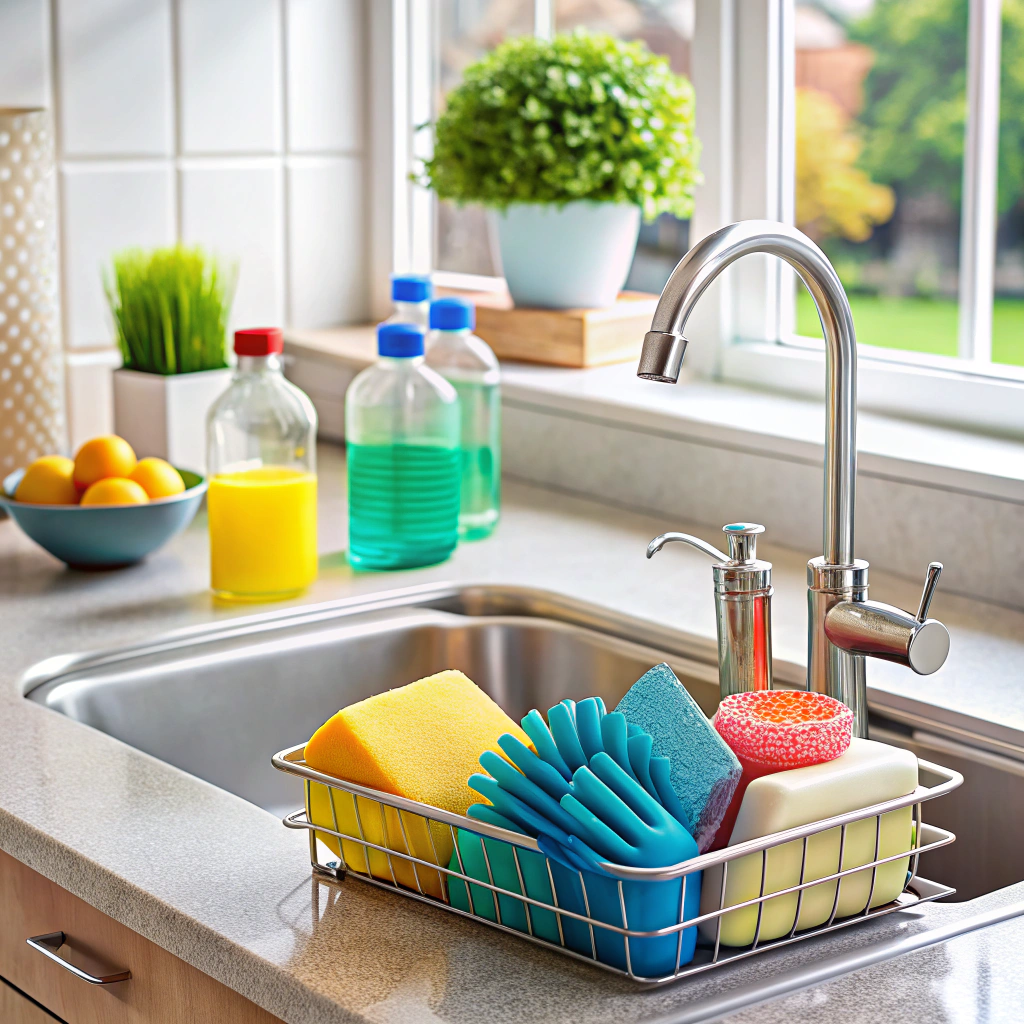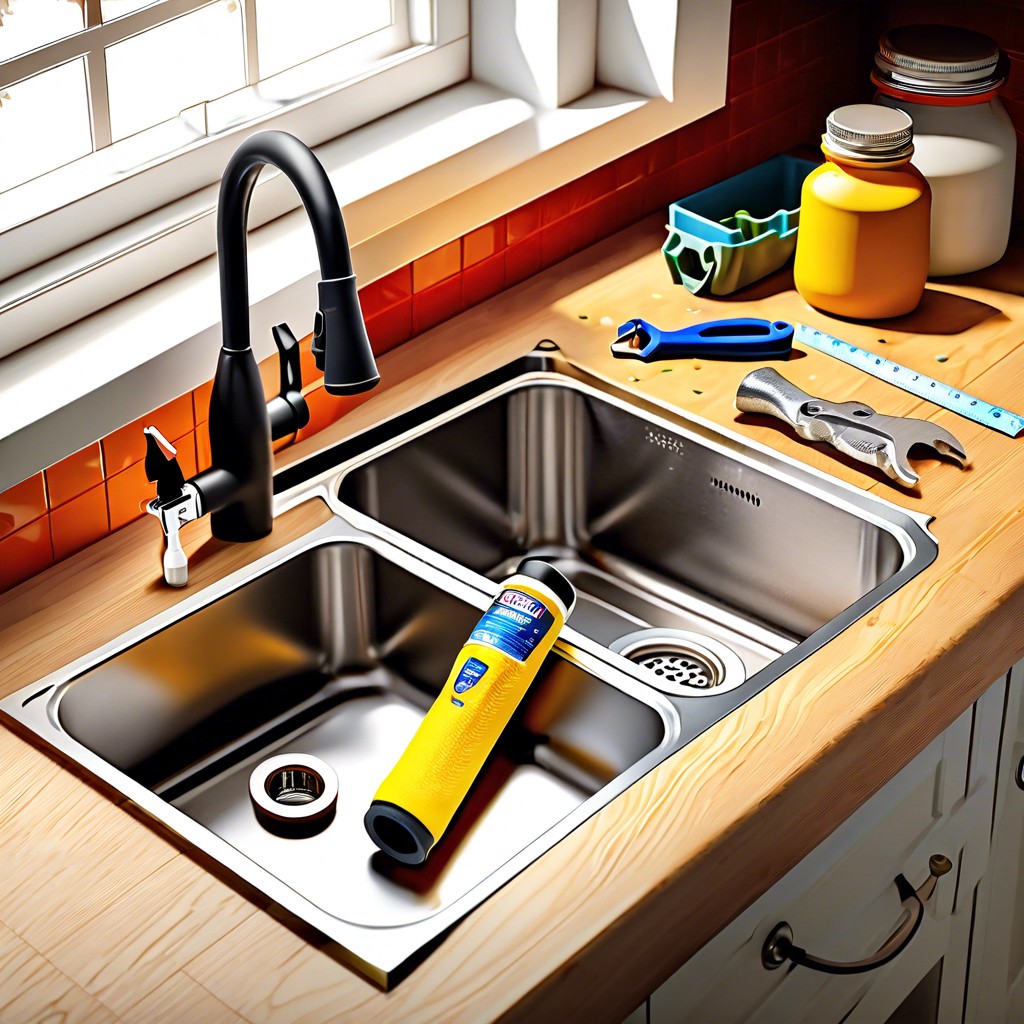Last updated on
Get ready to find out which kitchen sink size fits your space perfectly and enhances your cooking experience!
Key takeaways:
- Most common sink size is around 30 inches wide.
- Consider your cooking habits when choosing sink size.
- Measure cabinet size carefully for a proper fit.
- Top-mount sinks are easy to install, undermount sinks offer sleek look.
- Double-check all measurements and manufacturer guidelines.
What's Inside
Standard Kitchen Sink Sizes
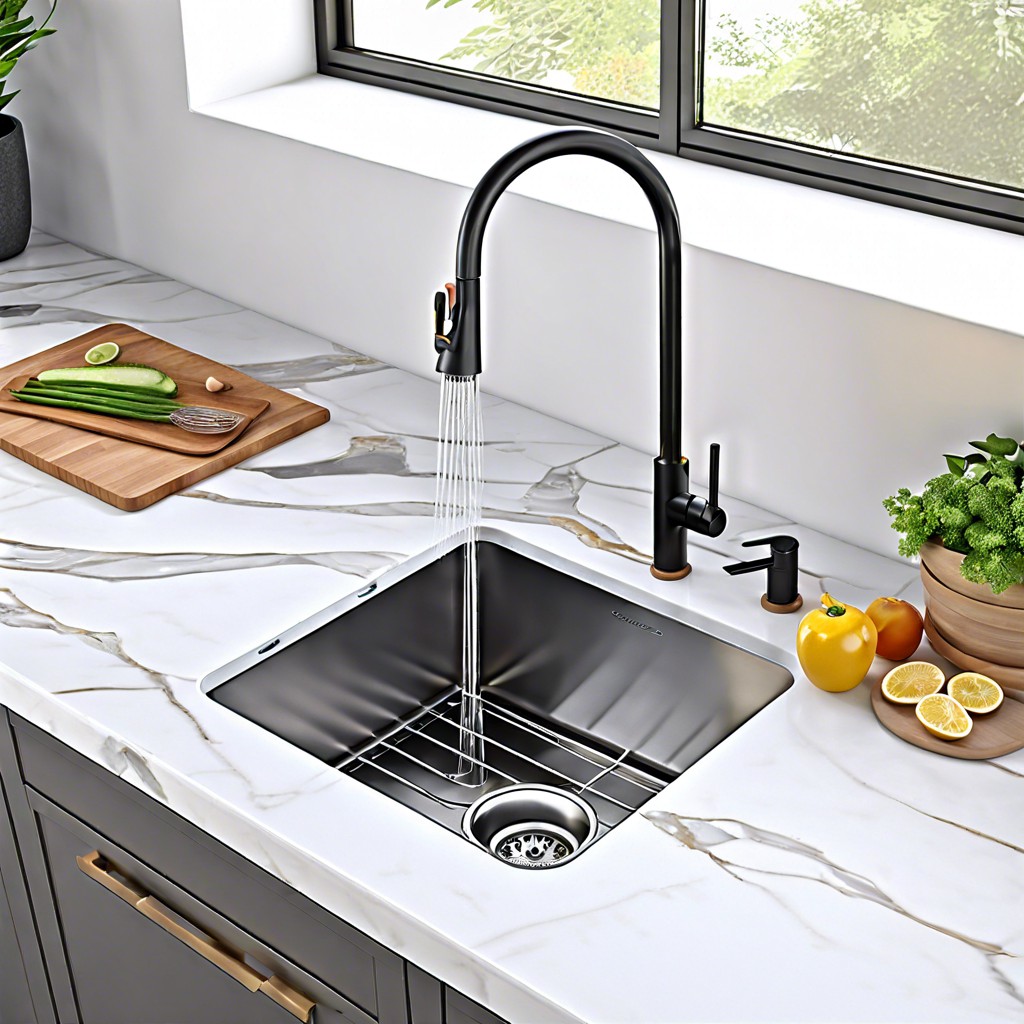
Everyone has seen those Goldilocks moments in the kitchen—where the sink feels either too big or too small. Here’s the scoop on standard options:
Most kitchen sinks range from 24 inches to 36 inches wide. The typical choice leans towards the 30-inch mark, balancing space and usability.
Depth varies, too. Common depths are between 8 and 10 inches. Deeper sinks help manage large pots and prevent splash battles with the faucet.
Width and depth covered? Great. Now, single bowl or double bowl? Single bowls, around 30 inches wide, offer more uninterrupted space. Meanwhile, double bowls split tasks—ideal for multitaskers who love a wash-rinse setup.
Farmhouse sinks, the classic beauties, often come in at 33 inches wide. Ideal for that Pinterest-perfect vibe.
Choosing wisely means fitting your kitchen style while accommodating your daily demands. Getting measurements right helps avoid that awkward remodel moment of “Wait, it doesn’t fit?”
Measure Your Counter Space
Before you start dreaming of that chef-worthy sink, grab a tape measure. Knowing your counter space is like figuring out if your favorite jeans still fit after Thanksgiving.
Start by measuring the length and width of the available counter area where you plan to install the sink. Make sure to account for the surrounding counter space; after all, you don’t want your sink swallowing your precious chopping real estate.
Think about the existing cabinets below. Are they ready to house your dream sink, or are they about to stage a cabinet-sized protest? Measure the depth from front to back – this’ll help you avoid a sink that’s too deep and converts your cabinet into an impromptu storage void.
Consider your faucet placement. It’s like lining up the perfect jump shot – everything hinges on precision. You need to decide if you want the faucet deck mounted or placed directly into the counter. While you’re envisioning that, don’t forget about splash zones. Nobody likes a surprise water park in the kitchen.
Lastly, don’t overlook the surrounding appliances. You don’t want to install a sink, only to discover it’s launching a turf war with your dishwasher. Double-check that all parts of your kitchen work together harmoniously. This bit of planning now will save you from a lot of head-scratching later.
Consider Your Cooking Habits
If you’re a culinary wizard whipping up gourmet meals, a double-bowl sink might be your best sous-chef. It helps manage multitasking, like washing veggies in one bowl and rinsing dishes in the other.
For those who prefer takeout over homemade soufflé, a single, smaller sink should suffice. Why sacrifice counter space for a sink that might only see the occasional cereal bowl?
Bakers, listen up! A deeper sink can handle those ginormous mixing bowls and cookie sheets with ease. No more wrestling to get them clean.
Love entertaining? Go big! A large sink accommodates multiple tasks simultaneously, ensuring you’re not stuck in the kitchen all night.
Lastly, if your kitchen is more of a cameo appearance in your home, then a modest sink will do just fine. Save that space for something more you, like an espresso machine or wine fridge. Cheers to that!
How to Determine the Minimum Cabinet Size
Time to play detective in your own kitchen! Grab that trusty measuring tape and let’s find out what your cabinet can handle.
Start with width. Measure from one side of the cabinet to the other. Don’t be shy; get right in there. Generally, you’ll need at least a 36-inch cabinet to comfortably fit a standard 33-inch sink. Simple, right?
Next up, depth. Take the tape measure from the front to the back of the cabinet. Remember, it needs to accommodate both the sink bowl and any protruding plumbing. Aim for at least 24 inches here.
Height matters too, especially if you’re eyeing a deeper sink. Make sure your cabinet interior height can handle the added depth without cramping the pipes.
Lastly, think about what’s lurking beneath. Got a garbage disposal or complex plumbing? Those need space too. Factor that in; a cramped cabinet isn’t a happy cabinet.
The right measures mean fewer headaches and no Franken-sink setups!
Top-Mount Sinks
These popular sinks are also known as drop-in sinks. As their nickname suggests, you simply “drop” them into a pre-cut hole in your countertop. The edges of the sink rest on the counter, making installation a breeze. This makes them a favorite for DIY enthusiasts.
One of the handy features of these sinks is that they can fit into most countertops without requiring specialized adjustments. Just plop them in, secure them underneath, and you’re good to go! They’re versatile, working well with all sorts of counter materials, from laminate to natural stone.
Cleaning around those edges isn’t everyone’s idea of fun, but the hassle is minimal compared to the easy installation and flexibility of these sinks. Whether you’re a seasoned home cook or someone who just reheats leftovers, these sinks can be a practical, budget-friendly option.
While they’re not the Mona Lisa of the sink world, their ease of installation and compatibility with various countertops make them a solid pick.
Undermount Sinks
These beauties offer a sleek look by attaching beneath the countertop. They make sweeping crumbs straight into the sink a breeze. No pesky lip to get in the way.
Undermount sinks are best friends with solid surface countertops like granite or quartz. Not a fan of cleaning grout lines? These sinks keep things tidy.
Keep in mind, installation can be trickier and may require professional help. They also need strong support, so ensure your countertops can handle it.
The seamless appearance and extra counter space are definitely worth the effort. Plus, your kitchen instantly looks more modern. Who needs extra drama in the kitchen, right?
Quick Tips for Finding the Right Kitchen Sink Size
Before you dive into the world of kitchen sinks, consider these helpful tips to ensure you pick the perfect size:
First, measure your counter space twice! You don’t want to end up with a sink that’s too big or too small. Next, think about how often you cook and clean. If you’re a culinary wizard, a larger sink might be a game-changer for washing big pots and pans.
Assess the minimum cabinet size beneath your counter. A sink needs to fit comfortably without cramping the plumbing or storage space. Pay attention to the depth of the sink as well. A deeper sink is great for hiding dirty dishes, but can be a backbreaker for shorter folks.
When choosing between top-mount and undermount sinks, remember that top-mounts are easier to install while undermounts give a sleek, seamless look. Finally, always check for an accurate template or guide from the manufacturer. This ensures a perfect fit every time.
Happy sink hunting!
